im wondering how much better (if any) the bigger piping is... is it worth it? 2 inch would be the easiest to fit in the engine bay (they way im routing it...) but i done want to loose HP cause the piping cant flow enough air... would going to the bigger pipe make the air comming in to the motor colder cause its staying in the pipe longer (speed, volume and velocity) and getting a chance to use the pipe as a way to get more heat out of it (sort of the reverse of heat soaking...) i would rather spend the extra time and money to make it fit the 2.5 inch stuff but is it worth it? (the 2.5 inch stuff looks better to lol...) whats your guys input on this?
Announcement
Collapse
No announcement yet.
2 VS 2.25 VS 2.5 inch intercooler piping?
Collapse
X
-
For the heatsoak thing, I don't see it making much difference at all. The intercooler is where heat transfer takes place, not really the piping. A little bit yeah, but I wouldn't use that as a main factor in picking your pipe size.Originally posted by b6t power View Postim wondering how much better (if any) the bigger piping is... is it worth it? 2 inch would be the easiest to fit in the engine bay (they way im routing it...) but i done want to loose HP cause the piping cant flow enough air... would going to the bigger pipe make the air comming in to the motor colder cause its staying in the pipe longer (speed, volume and velocity) and getting a chance to use the pipe as a way to get more heat out of it (sort of the reverse of heat soaking...) i would rather spend the extra time and money to make it fit the 2.5 inch stuff but is it worth it? (the 2.5 inch stuff looks better to lol...) whats your guys input on this?
What turbo are you using? The more cfm the turbo pushes out, the bigger piping you will need.
I use the following as a general guideline for picking pipe size:
2" - max 550cfm
2.25" - max 700cfm
2.5" - max 900 cfm
3" - max 1200cfmLast edited by theredrocket; 08-25-2010, 07:34 PM.Tyler has spoken
-
to tell you the truth i have no idea what cfm rating it is but i dont plan on making more than 200-230hp (for now :D ) so im thinking the 2 inch will be fine but i just want to make sure...
what i do know about the thurbo is that its a turbonetics t3 with a 59mm intake wheel and a 49 exhaust wheel... (the small part of the turbines... not the bottom of them where they sit in the housings...) here are some pics of it... when i got it and it was all dirty... (penny for size reference)
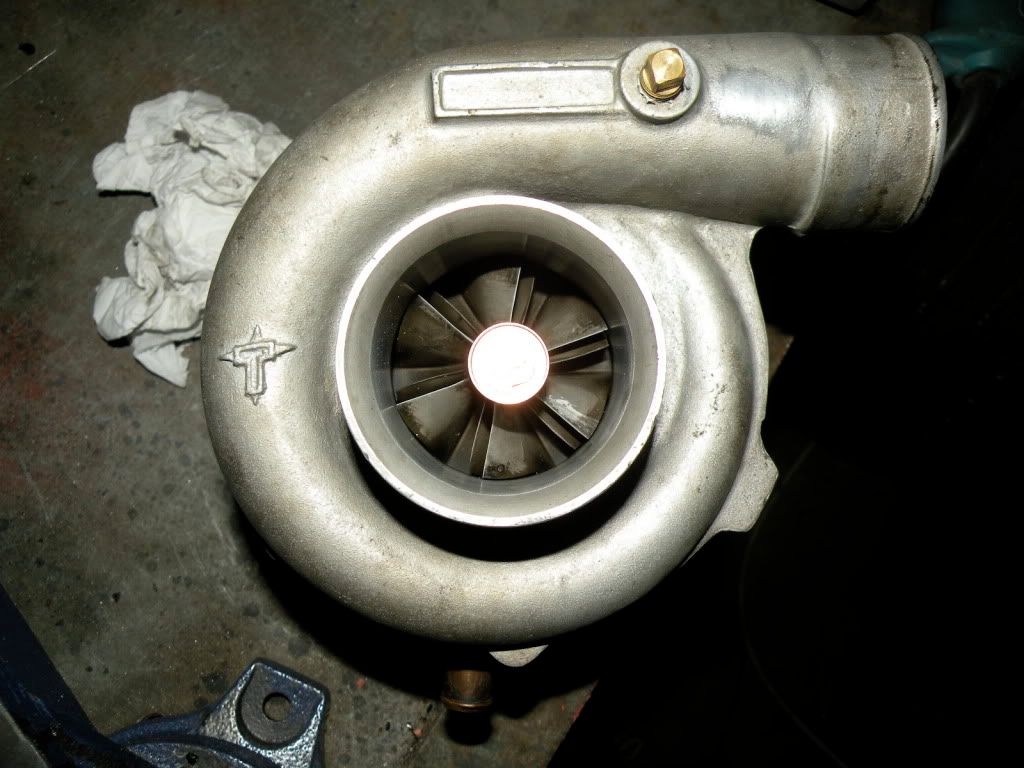
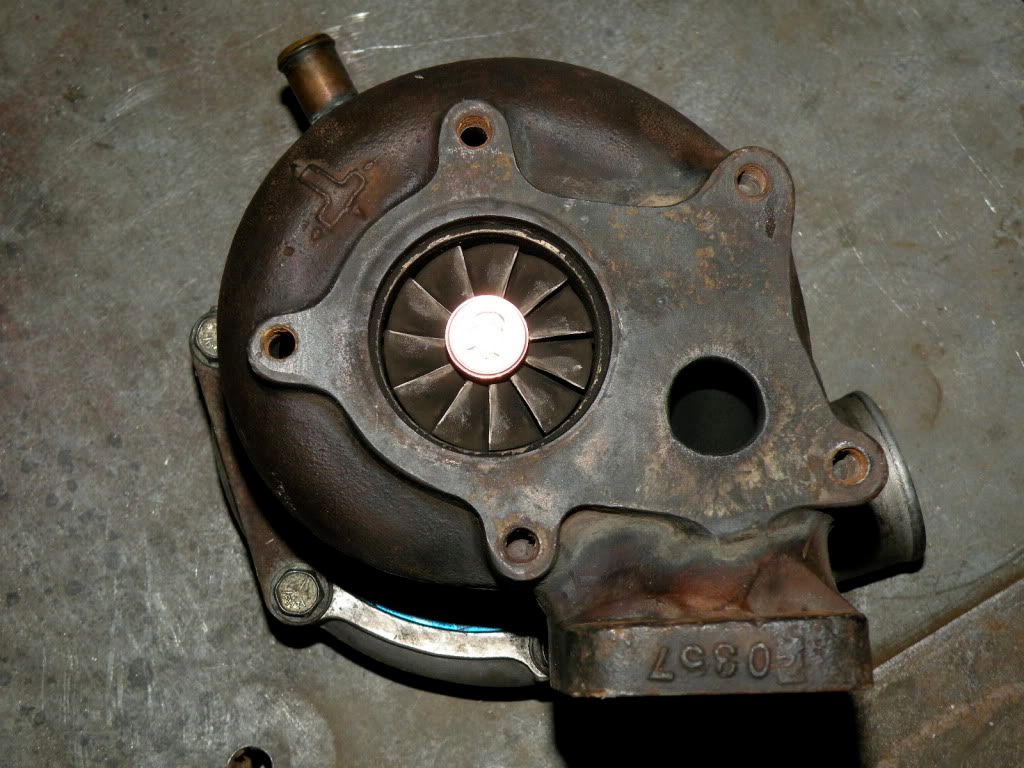
and when i cleaned it up and made sure everything was good on the inside...
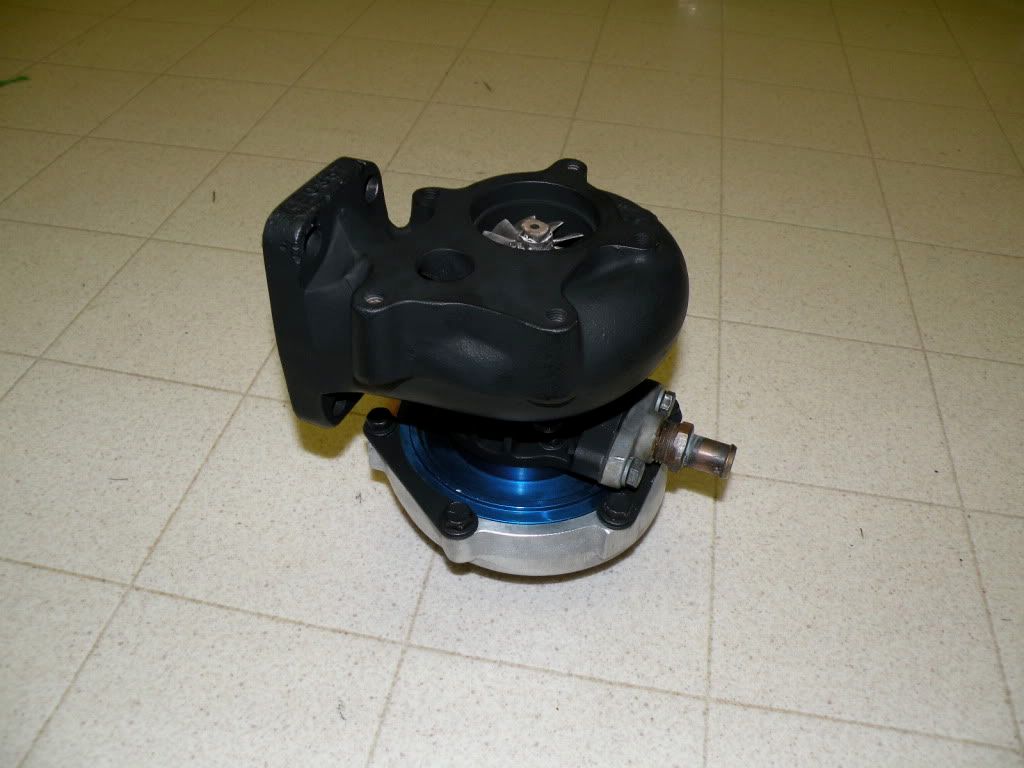
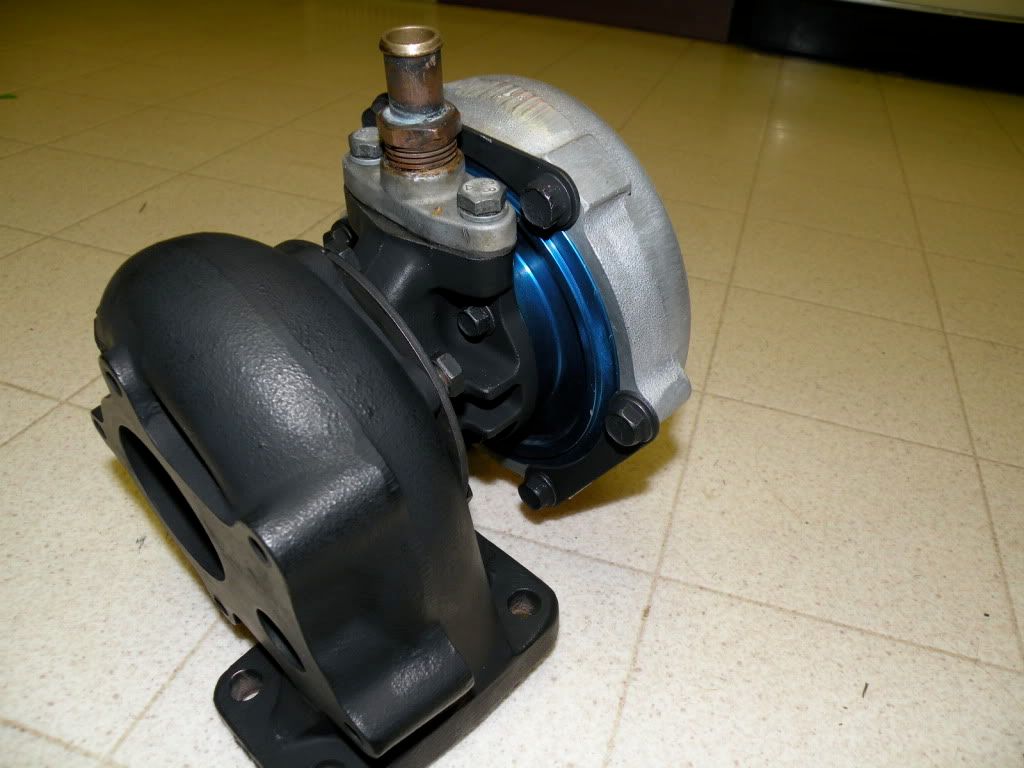
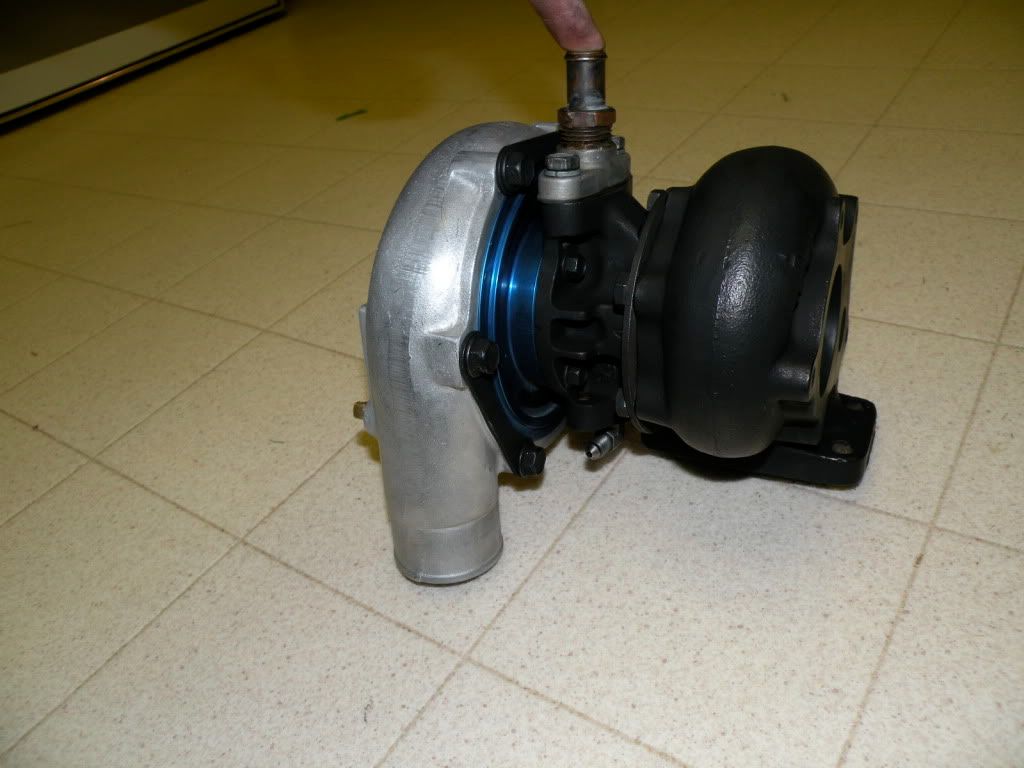

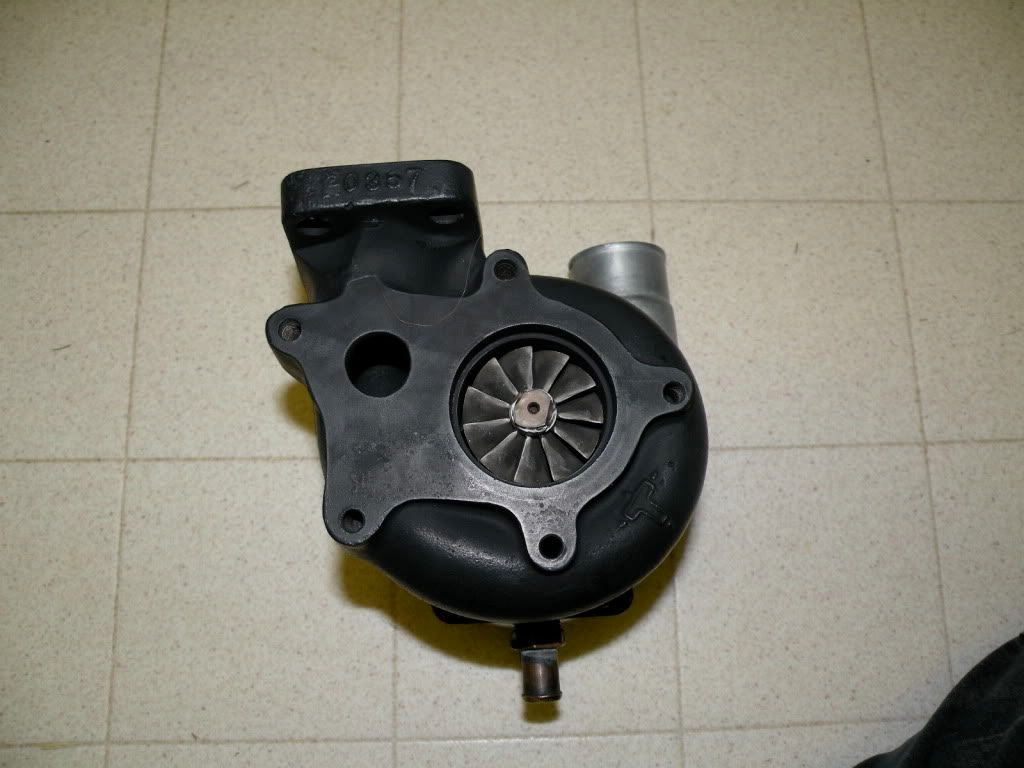
and a side by side shot of a stock b6t turbo lol...
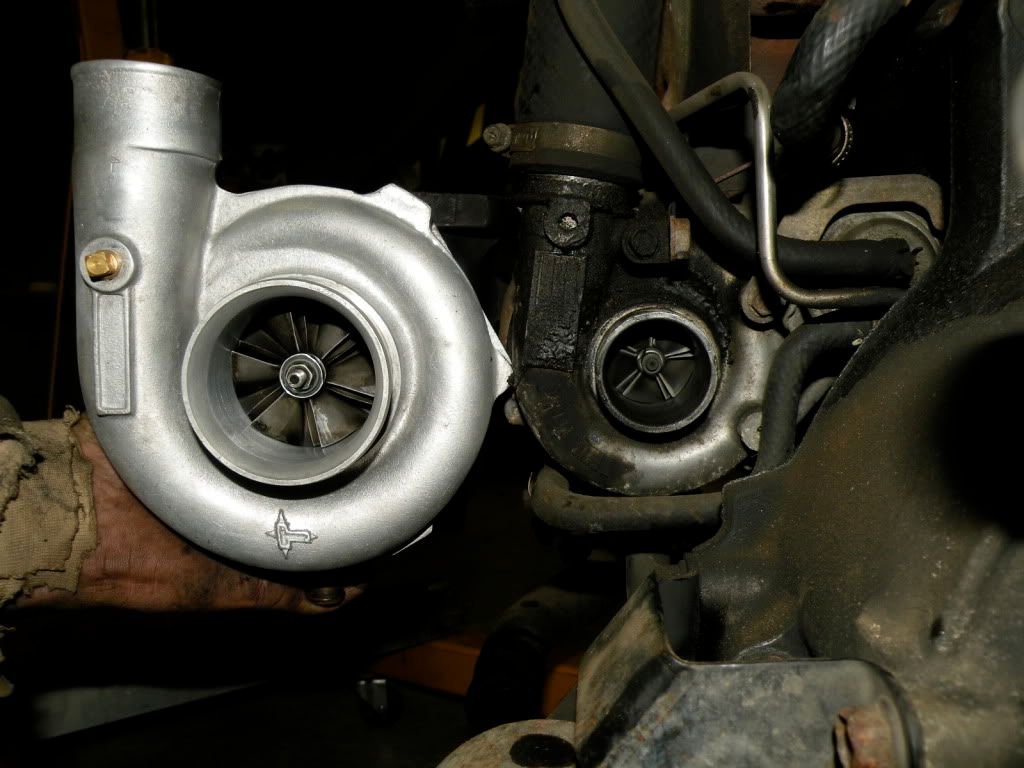
and another funny one...
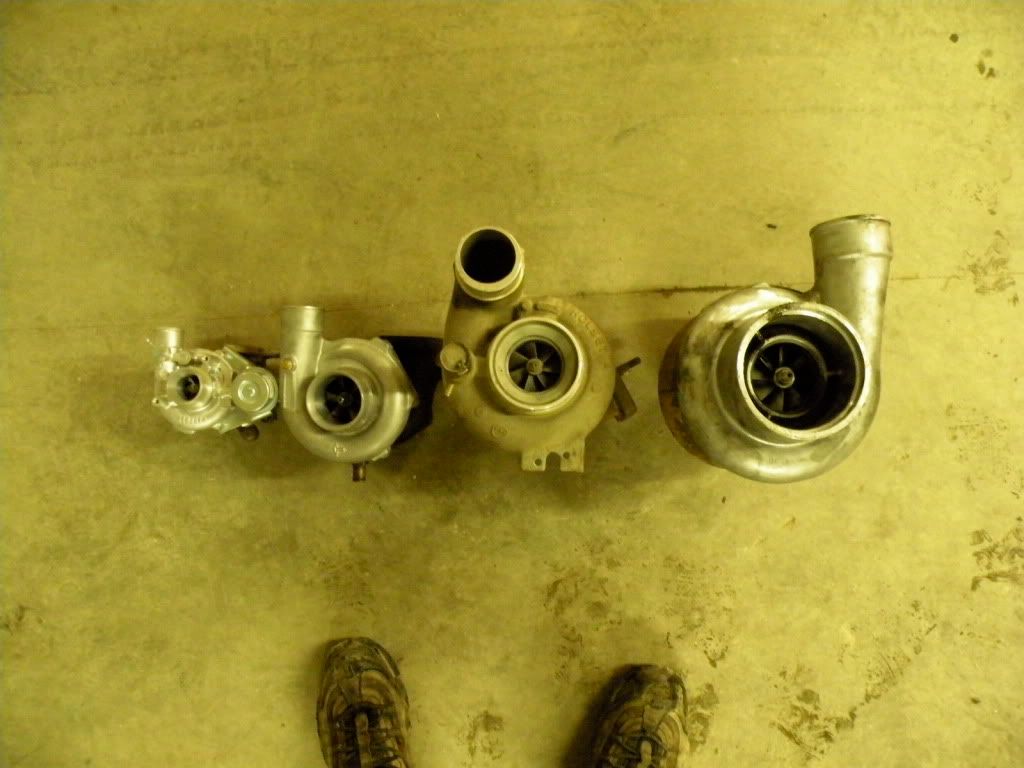
the massive one is for my friends 850hp dodge cummins :D
Comment
-
i match the outlet pipe pre intercooler. to the outlet size of the compressor housing... that retains more velocity/pressure.
sides that. i figure if the compressor housing can flow that much, the piping can too
 ---Has ClubProtege helped you in someway? show your support by Contributing--- Click Here---
---Has ClubProtege helped you in someway? show your support by Contributing--- Click Here---
1992- project FE3..... 313 WHP @ 9.3psi
I pet my dash when I get into the car..."good car"he actually has a mazda tree, parts grow on it

Comment
-
How big's the throttle body? I think 60mm, but I can't remember right now. 60mm = 2.36". 63.5mm = 2.5". 57.15mm = 2.25".
So, 2.25" is 2.85mm smaller than the TB, which is 3.5mm smaller than 2.5".
I think 60mm pipe (or whatever matches the TB) would be the best. On lots of turbo cars, they get the diameter up to the maximum size ASAP after the compressor, then run the same size from there.
--sarge
Comment
-
I went 2" from the turbo to the intercooler... and from there 2.25" to the throttle body.
If you go too big you lose velocity and therefore you'll get turbo lag... if you go too small you won't get enough CFM and you'll loose top end performance.
JoN - Automotive Machinist Journeyman/Refrigeration Mechanic Journeyman
Member of MX-3.com
1996 Mazda MX-3 RS - Creek Blue Mica
1993 Mazda MX-3 GS SE - Raspberry... RIP
Racing BP (Project "Blue" Marlin)... Twin Scroll GT3071R, breaking 30psi at the moment!
"Do it ONCE, do it RIGHT!"
Comment
-
^ thank you ---Has ClubProtege helped you in someway? show your support by Contributing--- Click Here---
---Has ClubProtege helped you in someway? show your support by Contributing--- Click Here---
1992- project FE3..... 313 WHP @ 9.3psi
I pet my dash when I get into the car..."good car"he actually has a mazda tree, parts grow on it

Comment
-
you can always flare the pipe to ~2.5" by the throttlebody -thats proably not a bad idea ---Has ClubProtege helped you in someway? show your support by Contributing--- Click Here---
---Has ClubProtege helped you in someway? show your support by Contributing--- Click Here---
1992- project FE3..... 313 WHP @ 9.3psi
I pet my dash when I get into the car..."good car"he actually has a mazda tree, parts grow on it

Comment
-
i'm going 2" from the turbo to the intercooler (via 2 - 2.5" reducer coupler)
2.5" from the intercooler to the throttle body
then the inlet will obviously go from the puny 1.75" up to 2.5" then a 2.5 - 3" reducer coupler for the VAF.-Jack
ONTARIO MAZDA CLUB! Join! https://www.facebook.com/groups/500055016671733/
91 626 LX - basically stock and pretty slow still
http://www.clubprotege.com/forum/sho...my-GD-626-LX-)
01 E53 3.0i - FOR SALE! pm if interested
pm if interested
91 USDM Protege LX - SOLD! turbo/manifold up for sale!
http://www.clubprotege.com/forum/showthread.php?t=46606
Comment
-
read this, it regarding ic pipe size and spool time.......
Think about how the system works - turbo moves air while the motor sucks it down. To *increase* your pressure by 2x, you double the flow of the motor plus the pipes.
Example: A 1.6L motor at 3k rpm is taking ~85cfm to run at 0psi. 6' of 2" charge piping holds ~19 cubic feet, 2.5" holds 29 cubic feet. That means to get 14.5psi of boost, you need to increase turbo flow by 268% for 2.5" and 244% for 2". With all the math done, that's only a ~10% difference overall. So if you hit 14.5psi in 1 second with 2" piping, you'll hit 14.5psi in 1.1 seconds with 2.5" piping. Thats 0.1 second longer - useless IMO! For 3" it ends up being 1.22 seconds (~22% more). The 'shocker' is pipe displacement: 2.5" has 56% more area to flow intake air vs 2". IMO that fraction of a second is useless, even with a smaller turbo & motor.
After you hit target PSI, your requirements drop to that of the displacement-per-revolution (85cfm at 3k), rather than ['d-p-r' + chargepipes], which is why increasing 2x pressure is difference than maintaining 2x pressure.5 boosted bp cars,why...
Comment


Comment